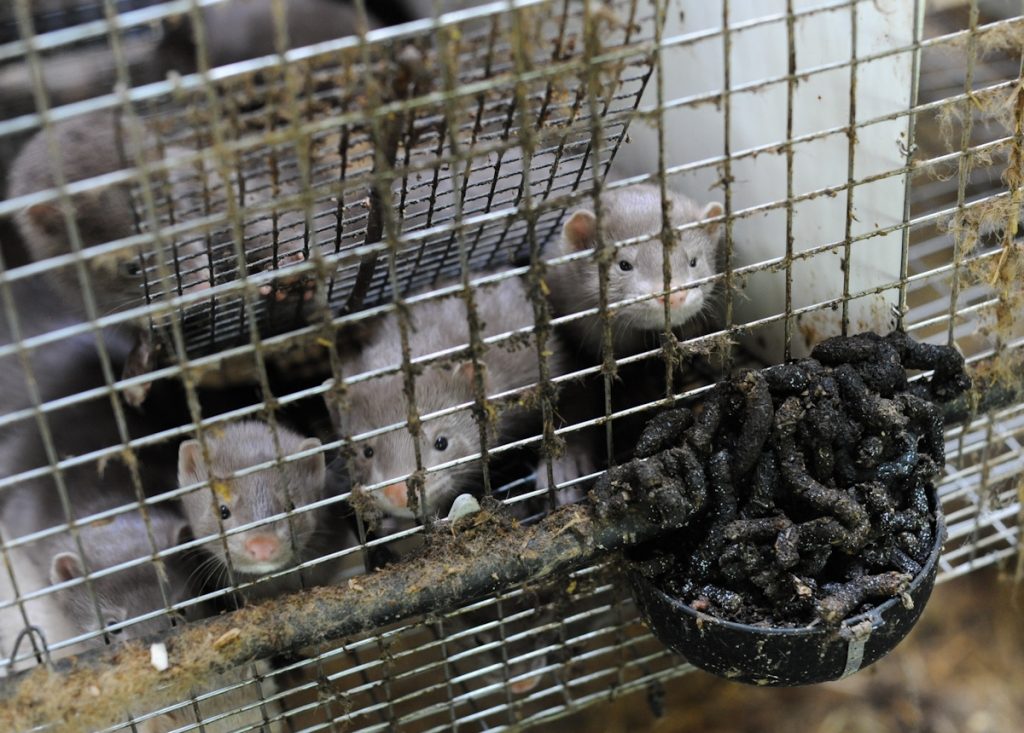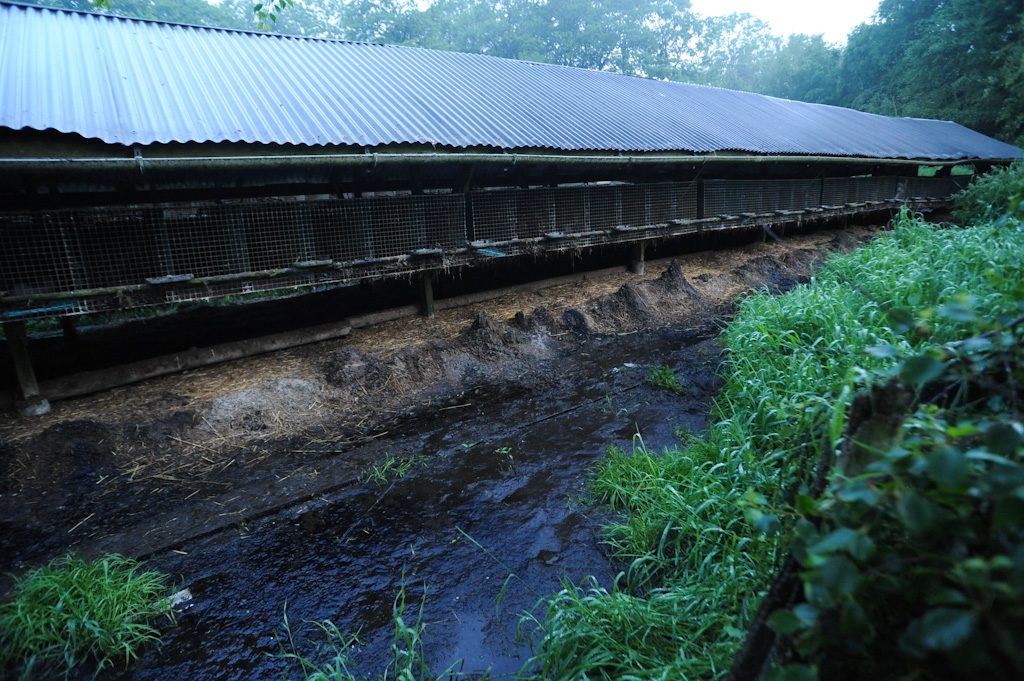The organization We Animals, known for their moving photos of animals in various human environments, has released a short film, now available online, which details the environmental, animal, and human health toll of mink farming in Nova Scotia.
The film, The Farm in My Backyard, was filmed in the eastern Canadian province of Nova Scotia, during one of the investigations We Animals has become known for. Using interviews with local residents and footage of both fur farms themselves and the devastation they’ve wreaked on nearby ecosystems, it efficiently and convincingly compiles many of the reasons the fur farming industry is harmful and should be brought to an end.
Mink farming has been around in Nova Scotia for 40-50 years, and in more recent years the farms here have grown to become factory fur farms with over 250,000 mink, consisting of rows upon rows of buildings filled with tiny and barren cages. These naturally solitary, semiaquatic animals are kept in groups in cages the size of a sheet of paper with no access to water to swim in or any other opportunity to express their natural behaviors. Animals mutilate themselves, pace, and cannibalize one another. The footage makes it clear that these conditions are nothing less than torture.

Mink crammed into a filthy cage, as is usual on fur farms. Image credit Jo-Anne McArthur / We Animals.
We Animals has extensively covered the animal impacts of fur farming before, and Founder Jo-Anne McArthur’s work as Featuring Photographer for the feature-length documentary film The Ghosts in Our Machine included chilling footage of animals suffering on fur farms. While those animal impacts are covered in The Farm in My Backyard, as they should be in any discussion of this issue, the impacts of the industry on the environment and on human health are centered here.
As the film shows, on these fur farms piles of manure accumulate behind each mink cage and in largely unmanaged holding areas on each farm. Beyond the burden of simply off-loading immense amounts of animal waste into surrounding ecosystems, which would be bad enough, additional phosphorus is fed to the animals to enhance their pelts, which then enters bodies of water through waste and run-off. Because of this, an overgrowth of blue-green algae has turned the lakes in this area green and rendered them toxic to humans and other animals.
A serious drop in demand for fur, especially within Canada, has essentially made the Canadian fur industry unviable, but instead of responding by phasing out an industry that is both harmful and financially incapable of sustaining itself, the Canadian government is keeping it afloat with subsidies and loans.
Local residents and activists voice their concern about the obvious conflict of interests keeping the few regulations regarding waste disposal from being enforced. The same government that is funding this industry is supposed to be regulating it and enforcing those regulations. While the law in Nova Scotia says that no mink pens are allowed within 500 feet of a body of water, footage shows flagrant disregard for that regulation, with many pens openly and permanently set up near lakes and ponds.
The Farm in My Backyard is yet another arresting journalistic project from We Animals and should be watched and shared widely, especially by Canadian taxpayers and anyone who cares about animals and the environment.
Watch the entire film below, on We Animals’ Facebook page, or the We Animal Media website.
**A new We Animals short film**In many countries around the world, markets for fur are closing down as demand wanes. But in the tiny Canadian province of Nova Scotia, the government is putting its own citizens' wellbeing second to this controversial industry, doubling down on its support for the fur industry despite its devastating impacts on the environment, animals, and the local residents pleading for change.We Animals is working with leading groups in Canada and around the world to end fur farming. Sign up to stay informed: weanimalsmedia.org/the-farm-in-my-backyard
Posted by We Animals on Thursday, April 4, 2019
Featured image: mink are kept in small crowded cages. In the wild, they live along rivers and spend up to 60% of their time in water. Image credit Jo-Anne McArthur / We Animals.






